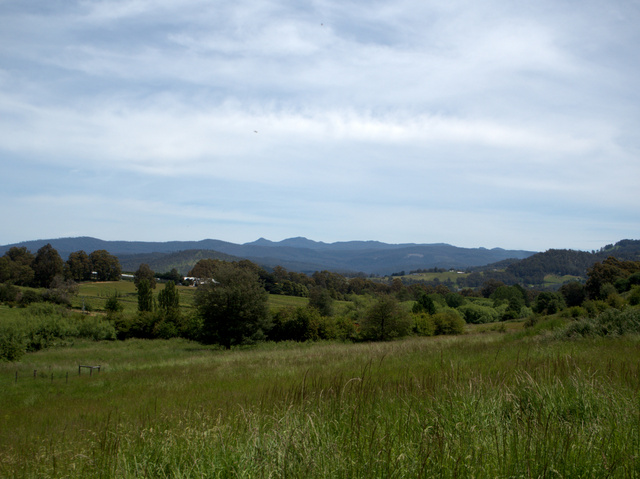The area south of Hobart offers a wealth of experiences, incredible scenery ranging from alpine areas in the Hartz mountains, dense rainforests, calm rivers, fertile agricultrual land and coastal beaches. However, with the exception of Bruny Island, where ferry services and local infrastructure are said to be struggling to keep up with rapidly growing numbers of visitors, the area is one of the less well-known regions of Tasmania, despite its proximity to Hobart.
It is also a place of stories – stories of changed lives, of communities finding new meaning and sources of income, and of heritage being integrated with innovation to create something truly special. Each of the places we visited seemed full of stories, and it is these, as much as the scenery and the experiences themselves that make for a memorable journey.

The region has been given a new tourism identity, the ‘Southern Trove’ to try to increase awareness and visitation, and I was lucky enough to be able to participate in an instameet that was part of the launch activities. And what a day it was! Regional tourism organisation Hobart and Beyond worked with Tourism Tasmania and local operators to put on a program that could easily have occupied two days. The occasion was also part of the launch of Tourism Tasmania’s new advocacy campaign, #tassiestyle.
After meeting early at Brooke Street Pier on Hobart’s waterfront, we boarded an Experience Tasmania coach for the forty minute drive to Franklin on the peaceful shores of the Huon River, home of Tasmania’s Wooden Boat Centre. The centre offers training and the chance to develop traditional Boat building skills for participating students as well as guided tours for passing visitors.
Franks Cider Bar and Cafe is just across the road for refreshments, and this morning they looked after the group well, providing morning tea and hot drinks. Their signature product is a boutique apple cider named for Frank Clark, the third of six generations of the Clark family to live at “Woodside” on the banks of the Huon River. The family is still there and Frank’s great granddaughter runs the business.
The building houses a small museum which features artefacts from the local area and in particular, items related to the apple industry that was the lifeblood of the region until the 1970s, and which is enjoying something of a resurgence as producers such as Franks making boutique ciders and other value-added products which are finding a ready market.
Back across the road, the riverbank adjacent to the Wooden Boat Centre offers a limitless supply of photo opportunities. A nearby jetty is also the home base for the magnificent sailing vessel Yukon, which offers tours on the Huon River and beyond. I’ve previously had the pleasure of sailing on her and can honestly recommend it.
Back on the coach, we drove through the township of Geeveston, centre of the region’s forestry industry, to the Tahune Airwalk. The Huon River runs for 164km from the heat of Tasmania’s South West Wilderness through forests and valleys before reaching the ocean near Cygnet. The Tahune Airwalk offers great scenery and experiences including the chance to walk through the treetops at the point where the Huon and Picton Rivers meet, West of the township of Geeveston.
While the Airwalk is spectacular, the journey to reach it is quite long, so it was great to see that additional activities are available, including cable hang gliding. A few of us, including your correspondent, were lucky enough to be offered a go.
[youtube https://www.youtube.com/watch?v=if7eMViSb9Q?rel=0&w=1280&h=720]
After this little adventure there was time to recover onboard the coach as we emerged from the forest and travelled to the far side of the Huon River to Fat Pig Farm, home of Sydney restaurant critic-turned Tasmanian farmer Matthew Evans and his partner Sadie Chrestman. The journey of their sea-change has been documented in the popular Gourmet Farmer TV series and Matthew is the author of numerous cookbooks and TV documentaries seeking to increase public awareness of where our food comes from as well as issues of sustainability and animal welfare.
We were treated to a tour of the farm, which he refers to as a ‘family farm’, and not at all like the agribusiness operations that produce most of our food. He and Sadie and their small team raise pigs, chooks and have a small dairy herd and grow vegetables, nuts, olives and fruit, which is now being used in their newly-opened restaurant to cater for weekly long-table lunches.
Following the delicious lunch, we got back on the coach and headed via Cygnet to Grandewe Cheeses, which overlooks the D’Entrecasteaux Channel near Woodbridge, just across from Bruny Island. Grandewe Cheeses is another paddock-to-plate food experience, producing sheeps milk cheeses and other products from their own flock, which is milked every afternoon.
The effort put into the raw produce pays off – we tasted a stunning and varied range of cheeses with such enthusiasm giving the impression that we had forgotten the lunch we’d just consumed. Seeking to minimise waste and add value to their farming operations, Grandewe (in the guise of Hartshorn Distillery) distill vodka and gin from the sheep whey (delicious), as well as offering a relaxed cafe and the opportunity to tour the farm and meet the primary producers – something a number of our instagrammers needed no encouragement to do.
The final leg in the coach was a short one, down to the jetty at Peppermint Bay, where we boarded the Peppermint Bay Cruise vessel for the one hour return trip up the Derwent River to Hobart. On the way, we saw sea eagles, salmon farms and the stunning scenery of the Derwent Estuary, accompanied by a glass of sparkling wine. The perfect end to a wonderful day.
Returning to Hobart on Peppermint Bay Cruises
What a glorious photo story this is; you are so right, Tassie offers all sorts of wonders in addition to the well publicised tourism locations.